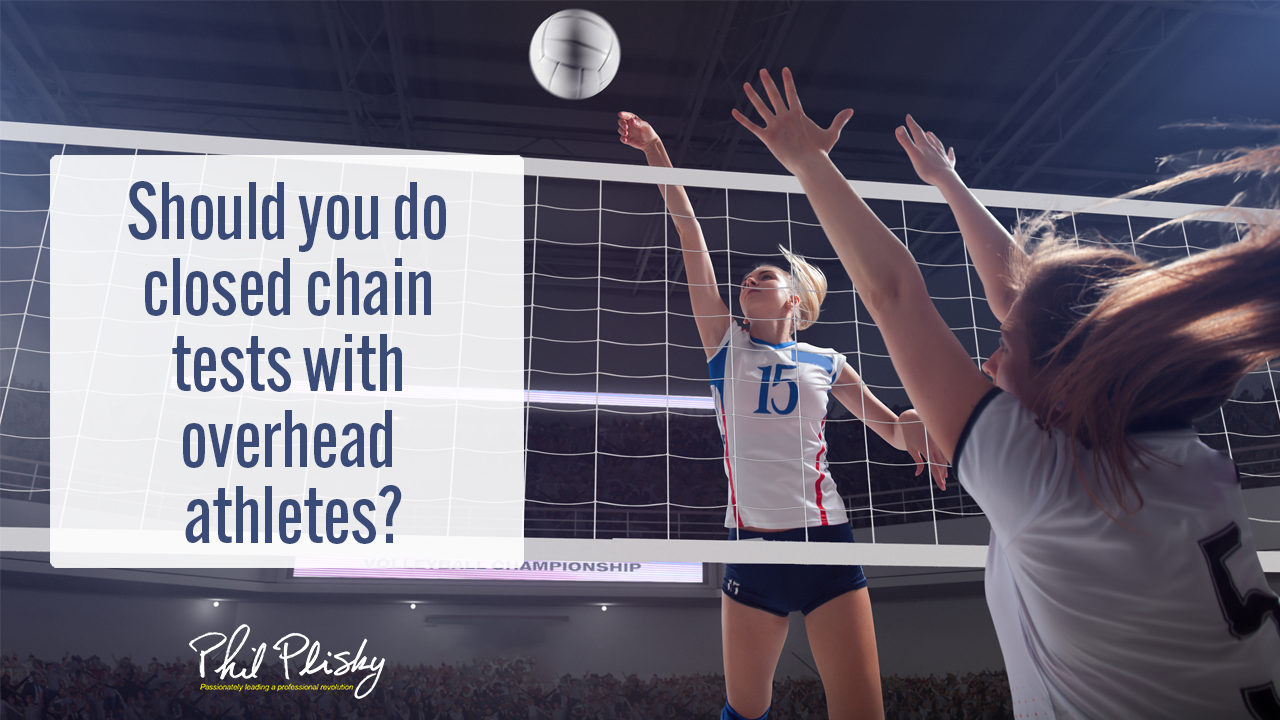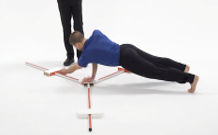
Upper Extremity Closed Chain Testing Part 1
I am frequently asked
“Why should I test someone in the closed kinetic chain when his sport is exclusively performed in the open kinetic chain?”
OR
“Closed kinetic chain testing is not “functional” for a baseball pitcher, why do it?”
What is the goal of closed kinetic chain testing?
First, we must define the goal of testing. Is our goal replicating the sport or activity? In order to accurately evaluate live throwing of a baseball pitcher, for example, that moves at over 8,000 degrees per second, I would need biomechanical analysis.
The problem is, even with that huge quantity of precise data, it does not tell us WHY the elbow or shoulder is in a certain position. Is it a problem with technique, or is there an underlying thoracic mobility or dynamic core stability issue? For that, I need different testing.
My goal in testing the upper quarter in the overhead athlete is to determine if they have the fundamental mobility, stability, and motor control that is the foundation for human movement regardless of the speed. This foundation includes not only glenohumeral joint stability and scapular stability, but how that extremity integrates with the core.
Further, the performance goal for overhead athletes is generating power from the ground, through the legs, transferred through the core and finally out the upper extremity. The ability to develop maximal tension followed by full relaxation is KEY to almost all athletic endeavors.
Do you incorporate closed chain exercises into your rehab or performance training?
If you do include closed chain exercises in your system, a quote from one of the original reliability studies on the Closed Kinetic Chain Upper Extremity Stability Test provides additional insight to the need for closed kinetic chain testing:
“Typically, in clinical practice, a measurement or test is performed to evaluate the status of a particular parameter, and then, based on the test results, appropriate intervention strategies are applied to improve the deficit. Clinicians must ask themselves why closed kinetic chain upper extremity exercises are being integrated into treatment programs when no testing has been performed to demonstrate any deficits in those areas.”
So, if you are doing rehabilitation in the closed-kinetic chain, you need to test in the closed kinetic chain as well: trunk stability push up, Upper Quarter Y Balance Test, plank, CKCUEST.

What is the process or progression of closed kinetic chain testing?
Most clinicians would agree that basic range of motion and strength need to be present prior to sport. Beyond traditional goniometer and muscle testing, one of the best ways of evaluating an athlete that has adequate mobility and stability is through testing in the closed kinetic chain. If the athlete can demonstrate that they have basic motor control competency and capacity in the closed kinetic chain, I have more data points to indicate that they have a solid foundation for sport specific skills, like hurling a small projectile thousands of degrees per second.
I want to first see that the athlete has bilateral static stability through plank and push up type positions. Then progressing to unilateral static postures like the side bridge. Ultimately, I want to see how they respond when challenged and deficits are typically best seen at the limit of stability.
 Future posts will discuss the specific research, testing procedures, normative data, and passing test results for the trunk stability push up, plank, closed kinetic chain upper extremity stability test, Y Balance Test Upper Quarter, and one armed hop test (and if we should use that one).
Future posts will discuss the specific research, testing procedures, normative data, and passing test results for the trunk stability push up, plank, closed kinetic chain upper extremity stability test, Y Balance Test Upper Quarter, and one armed hop test (and if we should use that one).
If you are looking for a detailed, research based course on upper extremity testing, check out my MedBridge course Discharge and Return to Sport Part 3: Upper Body.











